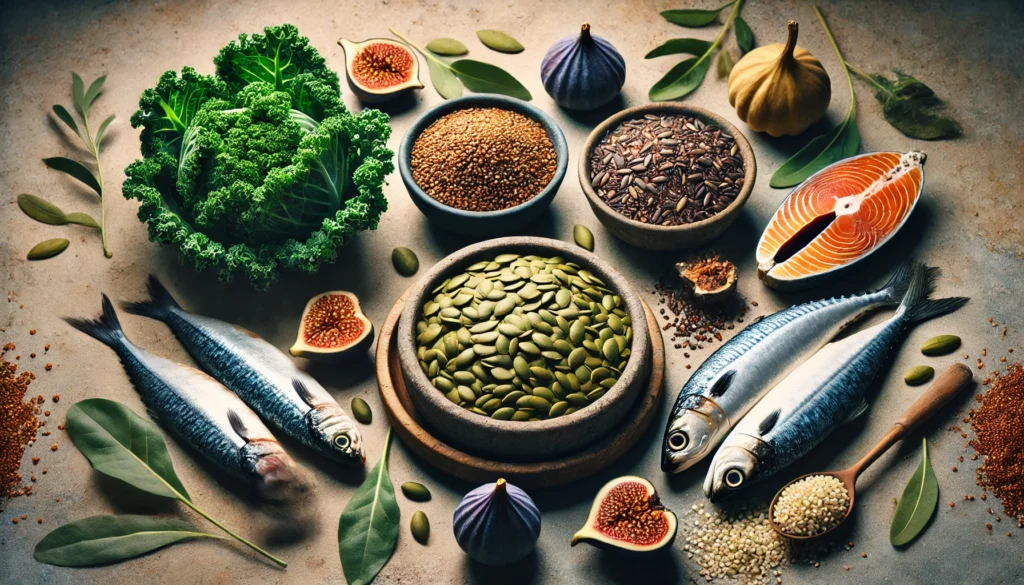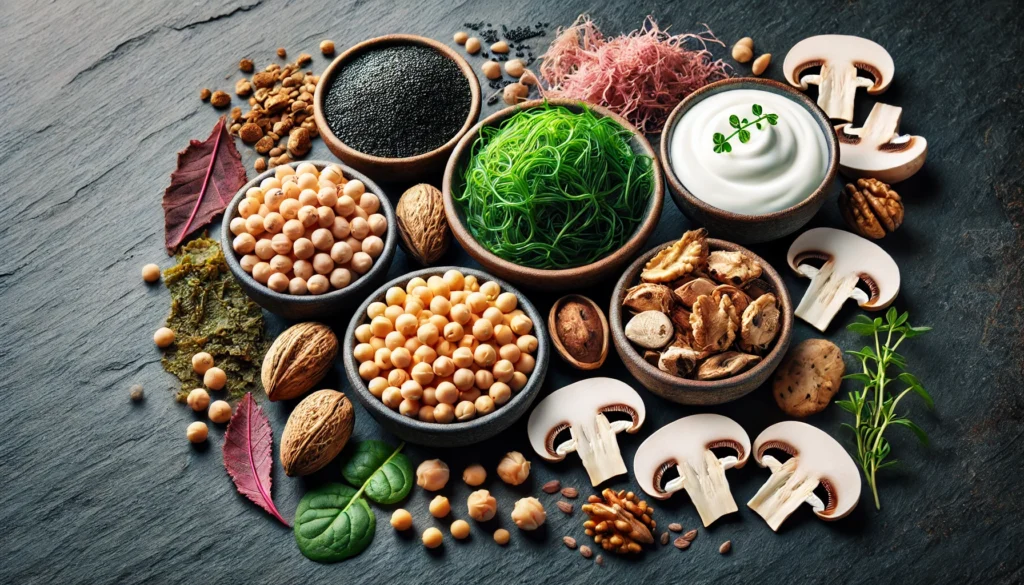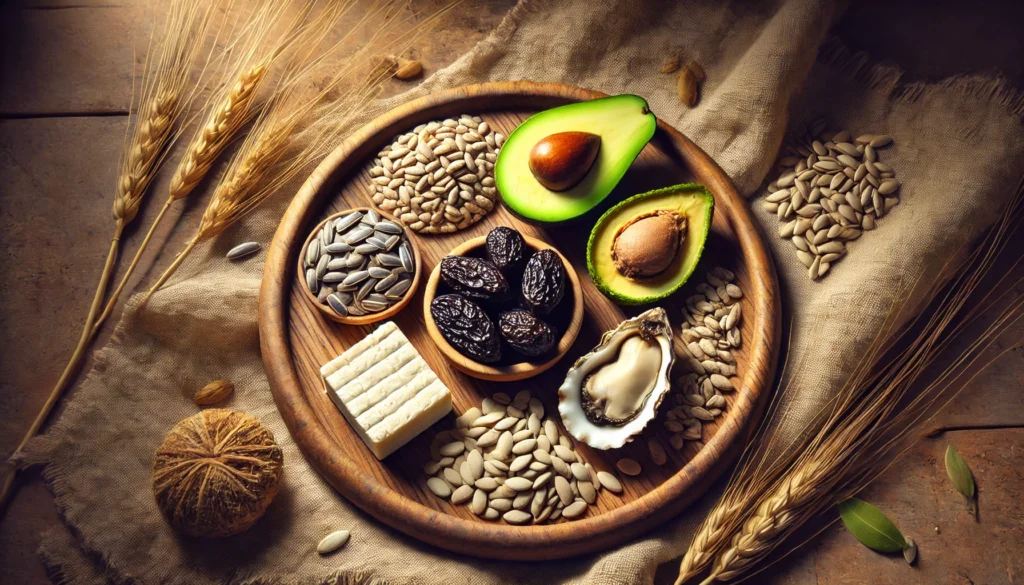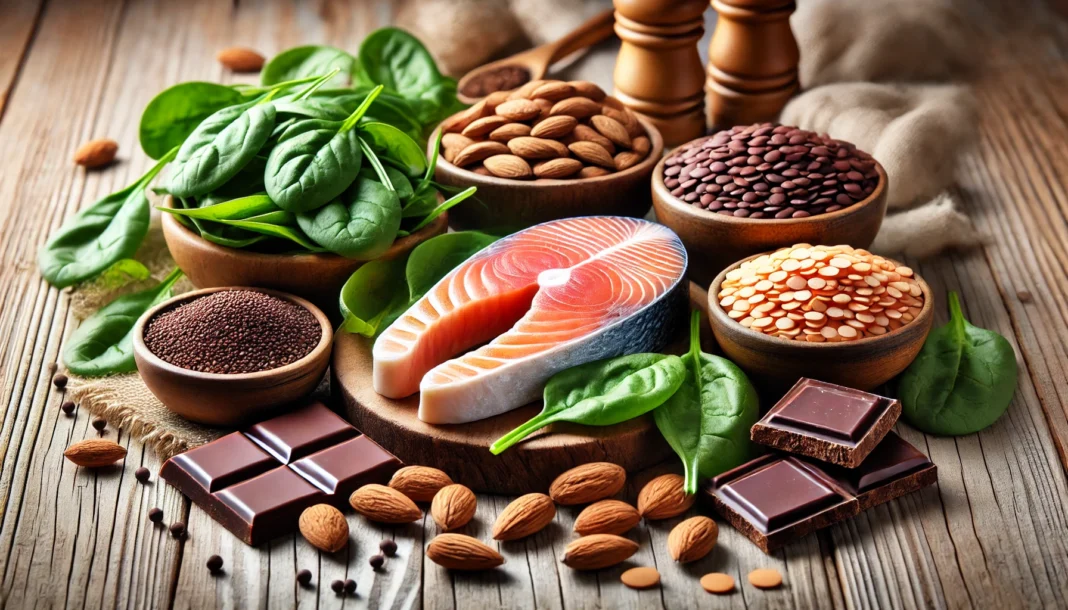Understanding Malabsorption: An Overview
Malabsorption is a complex condition that affects the body’s ability to absorb essential nutrients, including vitamins, minerals, carbohydrates, fats, and proteins, from the food we eat. This issue can lead to various health complications, ranging from nutrient deficiencies to severe gastrointestinal distress. Many people struggle with unexplained fatigue, poor digestion, and chronic nutrient deficiencies without realizing that malabsorption may be at the root of their problems. The process of nutrient absorption occurs primarily in the small intestine, where digestive enzymes, bile acids, and intestinal cells work together to break down food into bioavailable components that the body can use. When this process is disrupted, either due to digestive disorders, chronic diseases, or external factors, malabsorption can set in, leading to significant health issues.
You may also like: How to Improve Nutrient Absorption: Unlock the Benefits of Bioavailable Nutrients for Holistic Wellness
While the causes of malabsorption vary widely, they often include gastrointestinal disorders such as celiac disease, Crohn’s disease, and irritable bowel syndrome (IBS). Other potential contributors include pancreatic insufficiency, bile acid dysfunction, and even long-term medication use that affects the gut lining. In addition, lifestyle factors such as chronic stress, excessive alcohol consumption, and a diet lacking in diverse, nutrient-rich foods can also impair nutrient absorption. Understanding these underlying causes is essential in developing effective solutions to enhance digestive health and prevent the complications associated with malabsorption.

Key Triggers of Malabsorption
Gastrointestinal Disorders and Inflammation
One of the most common causes of malabsorption is chronic gastrointestinal inflammation. Conditions such as celiac disease, Crohn’s disease, and ulcerative colitis directly affect the integrity of the gut lining, leading to impaired nutrient absorption. In celiac disease, for example, the immune system attacks the small intestine in response to gluten consumption, damaging the villi—tiny, finger-like projections responsible for nutrient absorption. This damage results in a reduced surface area for nutrient uptake, leading to deficiencies in essential vitamins and minerals.
Crohn’s disease and ulcerative colitis, both classified as inflammatory bowel diseases (IBD), cause chronic inflammation in different parts of the gastrointestinal tract. This inflammation can lead to scarring and narrowing of the intestines, making it difficult for the body to absorb key nutrients such as iron, vitamin B12, and fat-soluble vitamins (A, D, E, and K). Over time, individuals with these conditions often experience weight loss, fatigue, and severe deficiencies that require medical intervention.
Pancreatic Insufficiency and Enzyme Deficiencies
The pancreas plays a crucial role in digestion by producing digestive enzymes that break down carbohydrates, proteins, and fats. When the pancreas fails to produce sufficient enzymes, a condition known as pancreatic insufficiency, the body cannot properly digest food, leading to malabsorption. This issue is common in individuals with chronic pancreatitis, cystic fibrosis, and pancreatic cancer. Without adequate enzyme activity, fats remain undigested, resulting in fatty stool (steatorrhea), bloating, and deficiencies in fat-soluble vitamins.
A deficiency in specific digestive enzymes, such as lactase, can also contribute to malabsorption. Lactose intolerance, for instance, occurs when the body lacks lactase, an enzyme necessary for breaking down lactose, the sugar found in dairy products. This deficiency leads to symptoms such as diarrhea, bloating, and abdominal pain, which can further interfere with nutrient absorption.
Bile Acid Dysfunction and Gallbladder Issues
Bile acids, produced by the liver and stored in the gallbladder, are essential for fat digestion and absorption. When bile acid production is impaired due to liver disease, gallbladder removal, or bile acid diarrhea, the body struggles to emulsify fats effectively. This issue results in the malabsorption of dietary fats and fat-soluble vitamins, leading to deficiencies that can impact overall health. Individuals with gallbladder dysfunction often experience digestive discomfort, including bloating and indigestion after consuming fatty meals.
Symptoms of Malabsorption and Nutrient Deficiencies
The symptoms of malabsorption vary depending on the severity of the condition and the specific nutrients affected. Common signs include chronic diarrhea, bloating, gas, and abdominal cramping, all of which indicate that the digestive system is not processing food efficiently. Weight loss and muscle wasting are also prevalent symptoms, as the body struggles to extract essential nutrients from food. Fatigue, weakness, and brain fog often arise due to deficiencies in key vitamins and minerals such as B12, iron, and magnesium.
Fat-soluble vitamin deficiencies present with unique symptoms. A deficiency in vitamin A may cause night blindness and dry skin, while vitamin D deficiency can lead to weakened bones and an increased risk of fractures. Vitamin E deficiency may contribute to neurological issues, and vitamin K deficiency can impair blood clotting, leading to excessive bruising and prolonged bleeding. Recognizing these symptoms early on is crucial for addressing malabsorption before it leads to long-term health complications.
Natural Solutions for Better Nutrient Absorption
Improving Gut Health with a Nutrient-Dense Diet
One of the most effective ways to combat malabsorption is by adopting a diet rich in whole, nutrient-dense foods. Consuming a variety of fruits, vegetables, lean proteins, and healthy fats provides the body with essential vitamins and minerals necessary for optimal absorption. Certain foods, such as fermented vegetables, yogurt, and kefir, contain probiotics that support gut health by promoting a balanced microbiome. A well-functioning gut microbiome plays a key role in breaking down food and enhancing nutrient absorption.
To ensure adequate mineral intake, individuals should focus on consuming high-mineral foods such as leafy greens, nuts, seeds, and legumes. For example, spinach, almonds, and lentils are three good sources of minerals, providing essential nutrients such as iron, magnesium, and zinc. Similarly, for those seeking vitamins, citrus fruits, bell peppers, and carrots serve as three healthy food sources for vitamins A, C, and E, which are vital for immune function and skin health.
Supporting Digestive Enzyme Production
Enhancing the body’s natural enzyme production can significantly improve nutrient absorption. Incorporating foods that stimulate enzyme activity, such as pineapple (rich in bromelain) and papaya (which contains papain), can aid digestion. Additionally, taking digestive enzyme supplements may be beneficial for individuals with pancreatic insufficiency or other enzyme deficiencies.
Managing Stress and Reducing Inflammation
Chronic stress negatively affects digestion by altering gut motility and reducing the production of digestive enzymes. Practicing stress management techniques such as meditation, deep breathing, and regular exercise can improve digestive function. Reducing inflammation through an anti-inflammatory diet—one that eliminates processed foods, refined sugars, and excessive alcohol—can also enhance nutrient absorption and overall well-being.

Frequently Asked Questions (FAQ) on Malabsorption and Nutrient Absorption
What are some signs that you might have a malabsorption issue?
Malabsorption can manifest in various ways, often depending on which nutrients are not being properly absorbed. Common signs include chronic diarrhea, bloating, and excessive gas, which indicate that food is passing through the digestive system without being fully broken down. Additionally, unexplained weight loss, fatigue, and muscle weakness may be linked to poor absorption of macronutrients such as proteins and fats. Nutrient deficiencies can also present through more specific symptoms, such as brittle nails, thinning hair, and dry skin, all of which suggest a lack of essential vitamins and minerals. If left untreated, malabsorption can contribute to long-term complications, including weakened bones from calcium deficiency and cognitive impairment due to insufficient B vitamins.
Why are minerals important for the body, and how does mineral absorption impact health?
Minerals are vital for various bodily functions, including maintaining strong bones, supporting nerve function, and ensuring proper enzyme activity. A deficiency in key minerals such as magnesium, iron, or zinc can lead to serious health issues, ranging from anemia to weakened immune function. When the body struggles to absorb minerals due to conditions such as celiac disease or Crohn’s disease, essential processes are disrupted, leading to chronic fatigue, muscle cramps, and even cardiovascular problems. High food sources in minerals, such as leafy greens, nuts, and seafood, can support mineral intake, but if absorption is impaired, supplementation or dietary adjustments may be necessary. Addressing gut health and reducing inflammation can also enhance mineral absorption and overall well-being.
What are three healthy food sources for vitamins that support nutrient absorption?
A well-balanced diet should include foods rich in vitamins that enhance digestion and absorption. Fermented foods such as yogurt and kimchi provide probiotics that help break down food and improve gut health. Leafy greens like spinach and kale are excellent sources of folate and vitamin K, both of which play a role in nutrient metabolism. Citrus fruits, rich in vitamin C, enhance iron absorption, making them an essential addition to meals that contain plant-based iron sources. Choosing whole, unprocessed foods ensures that the body receives vitamins in their most bioavailable forms. Additionally, consuming these foods with healthy fats, such as avocado or olive oil, can further improve the uptake of fat-soluble vitamins like A, D, E, and K.
What are five foods that are high in minerals and support digestive health?
Several nutrient-dense foods can provide essential minerals while also promoting better digestion. Almonds are an excellent source of magnesium, which plays a crucial role in muscle function and digestion. Shellfish, such as oysters and mussels, are rich in zinc, a mineral that supports immune function and gut repair. Dark leafy greens like Swiss chard provide calcium and potassium, both of which regulate digestive enzyme activity. Bananas offer a good supply of potassium and prebiotics, which fuel beneficial gut bacteria. Lastly, pumpkin seeds are packed with iron and magnesium, contributing to oxygen transport and healthy digestion. Incorporating these foods regularly can help replenish mineral levels and optimize gastrointestinal function.
How can improving digestion help with nutrient absorption?
Efficient digestion is the foundation of proper nutrient absorption, as it ensures that food is broken down into its essential components. Digestive enzymes play a key role in this process, breaking down carbohydrates, proteins, and fats into absorbable molecules. If enzyme production is low due to stress, aging, or chronic illness, supplementing with natural digestive aids like bromelain (found in pineapple) or papain (found in papaya) can help. Maintaining a diverse microbiome through probiotic-rich foods can also enhance digestion and reduce bloating. Additionally, slowing down while eating and chewing food thoroughly can give the digestive system enough time to process nutrients effectively.
What are three foods that have a lot of minerals and are easy to digest?
For individuals with digestive sensitivities, choosing mineral-rich foods that are easy on the gut is essential. Bone broth is an excellent source of calcium, magnesium, and phosphorus while being gentle on the digestive tract. Soft-cooked vegetables like carrots and zucchini provide essential minerals like potassium and manganese without causing irritation. White fish, such as cod or tilapia, is rich in iodine and selenium, both of which support thyroid function and metabolism. These foods are easily broken down and absorbed, making them ideal for those experiencing malabsorption. Preparing meals with simple cooking methods, such as steaming or slow-cooking, can further enhance digestibility.
What are some different foods for minerals that support gut healing?
A nutrient-dense diet tailored to support gut healing should include foods that are both mineral-rich and anti-inflammatory. Seaweed provides iodine and other trace minerals that are crucial for metabolic and digestive function. Beets are rich in manganese and nitrates, which promote healthy blood flow and liver detoxification. Chia seeds contain calcium, magnesium, and omega-3 fatty acids, which help soothe inflammation and maintain a balanced microbiome. Incorporating these foods into daily meals can help rebuild gut integrity and optimize nutrient absorption. Pairing them with fiber-rich foods, such as legumes and whole grains, can also enhance their benefits.
What helps digestion, and what are some lifestyle habits that promote nutrient absorption?
Beyond diet, lifestyle factors play a critical role in digestion and nutrient absorption. Stress management techniques, such as mindfulness and deep breathing, can help regulate gut motility and enzyme production. Regular physical activity, particularly low-impact exercises like yoga or walking, can stimulate digestion and prevent bloating. Staying hydrated is essential, as water facilitates the breakdown and transport of nutrients throughout the body. Eating meals at regular intervals and avoiding excessive snacking allows the digestive system to process food efficiently. Combining these habits with a nutrient-rich diet can significantly enhance absorption and overall health.
What foods have minerals and vitamins that support a healthy immune system?
A strong immune system depends on adequate intake of both vitamins and minerals that regulate immune response and inflammation. Citrus fruits, rich in vitamin C, enhance iron absorption and white blood cell production. Shellfish provide zinc, which is essential for immune cell function and wound healing. Dark leafy greens like kale contain vitamin A, which supports the integrity of mucosal barriers that protect against infections. Nuts and seeds offer a combination of selenium and vitamin E, both of which act as antioxidants to combat oxidative stress. Regularly consuming these foods can strengthen immunity and improve overall well-being.
Is iron water or fat-soluble, and how does that affect its absorption?
Iron is a water-soluble mineral, meaning it dissolves in water and is best absorbed in an acidic environment. Unlike fat-soluble vitamins, which require dietary fats for absorption, iron uptake is enhanced by consuming it with vitamin C-rich foods such as citrus fruits or bell peppers. However, certain substances, such as calcium, tannins (found in tea), and phytates (found in whole grains), can inhibit iron absorption. To maximize its bioavailability, it is recommended to consume iron-rich foods separately from calcium supplements and excessive caffeine. Understanding these interactions can help individuals optimize their iron intake and prevent deficiencies.

Conclusion: Taking Control of Your Nutrient Absorption
Addressing malabsorption requires a multifaceted approach that involves identifying underlying causes, making dietary and lifestyle adjustments, and supporting gut health. By understanding the key triggers of malabsorption, recognizing the symptoms, and implementing natural solutions, individuals can take proactive steps to optimize their nutrient absorption. A balanced diet rich in bioavailable nutrients, along with stress management and digestive support, can make a significant difference in overall health and well-being.
malabsorption causes, nutrient absorption issues, digestive health, gut health, bioavailable nutrients, holistic supplements, vitamins and minerals, gastrointestinal disorders, pancreatic insufficiency, bile acid dysfunction, food sources of minerals, best foods for vitamins, digestive enzymes, nutrient deficiencies, how to improve digestion, probiotics and gut health, natural solutions for absorption, anti-inflammatory diet, stress and digestion, fat-soluble vitamins deficiency
Further Reading:
The best foods for vitamins and minerals
Disclaimer
The information contained in this article is provided for general informational purposes only and is not intended to serve as medical, legal, or professional advice. While NewsHealthWatch strives to present accurate, up-to-date, and reliable content, no warranty or guarantee, expressed or implied, is made regarding the completeness, accuracy, or adequacy of the information provided. Readers are strongly advised to seek the guidance of a qualified healthcare provider or other relevant professionals before acting on any information contained in this article. NewsHealthWatch, its authors, editors, and contributors expressly disclaim any liability for any damages, losses, or consequences arising directly or indirectly from the use, interpretation, or reliance on any information presented herein. The views and opinions

